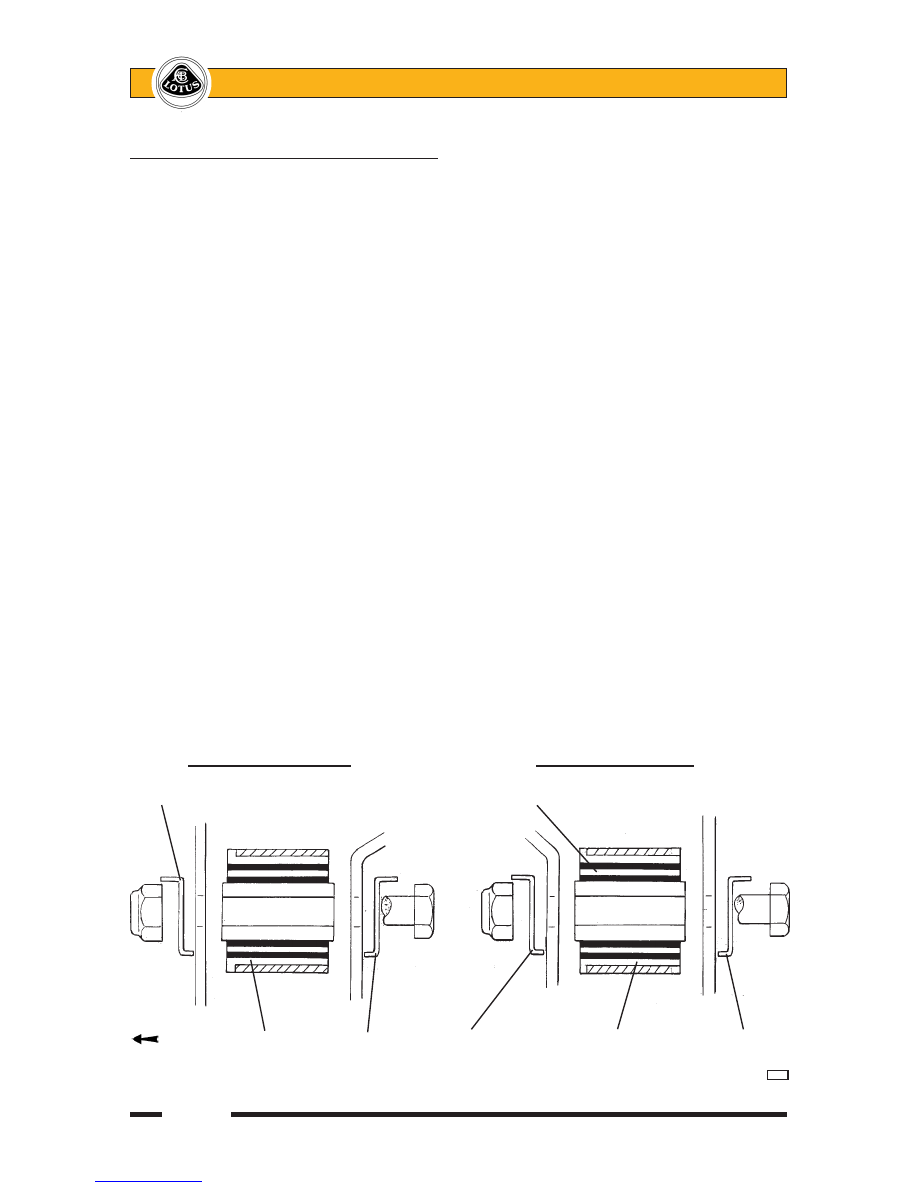Lotus Eleven/Elise/Exige. Manual - part 28

Page 6
Lotus Service Notes
Section DH
DH.3 - SUSPENSION DISASSEMBLY/ASSEMBLY
The suspension may be disassembled without the use of any special tools other than a 'Torx' socket for
the hub bearing carrier bolts, a spring compressor required only if the spring is to be removed from the damper
unit, and a ball joint splitter. If the hub carrier is to be removed, necessitating withdrawal of the driveshaft, it is
recommended first to release the driveshaft nut before dismantling the brakes.
With the car on a wheel free lift and with the rear wheels removed:
1. Remove the split pin securing the driveshaft nut, and with the brakes firmly applied, remove the driveshaft
nut.
2. Remove the engine bay undertray to provide access to the lower wishbone front pivot.
3. Disconnect the parking brake cable from the caliper. Release the 'P' clip securing the brake hose to the
top wishbone and remove the two bolts securing the brake caliper to the hub carrier. Support the caliper
aside without straining the brake hose. Release the single retaining screw, and remove the brake disc
from the hub.
4. Disconnect the wheel speed sensor cable from each hub unit, and release from routing clips.
5. Release the nut securing the outer end of the toe link to the hub carrier, and use a ball joint separator to
release the joint from the carrier.
6. Remove the nut securing the ball pin of the lower ball joint to the hub carrier, and use a ball joint separator
to release the joint from the carrier.
7. Remove the two bolts securing the top swivel joint plinth to the hub carrier, noting and retaining the camber
adjustment shim pack.
8. Withdraw the hub carrier assembly from the driveshaft, using a suitable puller tool if necessary to release
the shaft from the hub. Do not allow any pulling force to be applied through the driveshaft C.V. joints, or
damage to the joints will be caused.
9. Remove the top and bottom mounting bolts for the spring/damper unit, and withdraw.
10. Remove the top wishbone pivot bolts, and withdraw the wishbone from the rear subframe.
Top wishbone front pivot Top wishbone rear pivot
Tab washer Plastic interleaf
FRONT Bush inserted Tab Tab washer Bush inserted Tab
from front washer from front washer
d22b